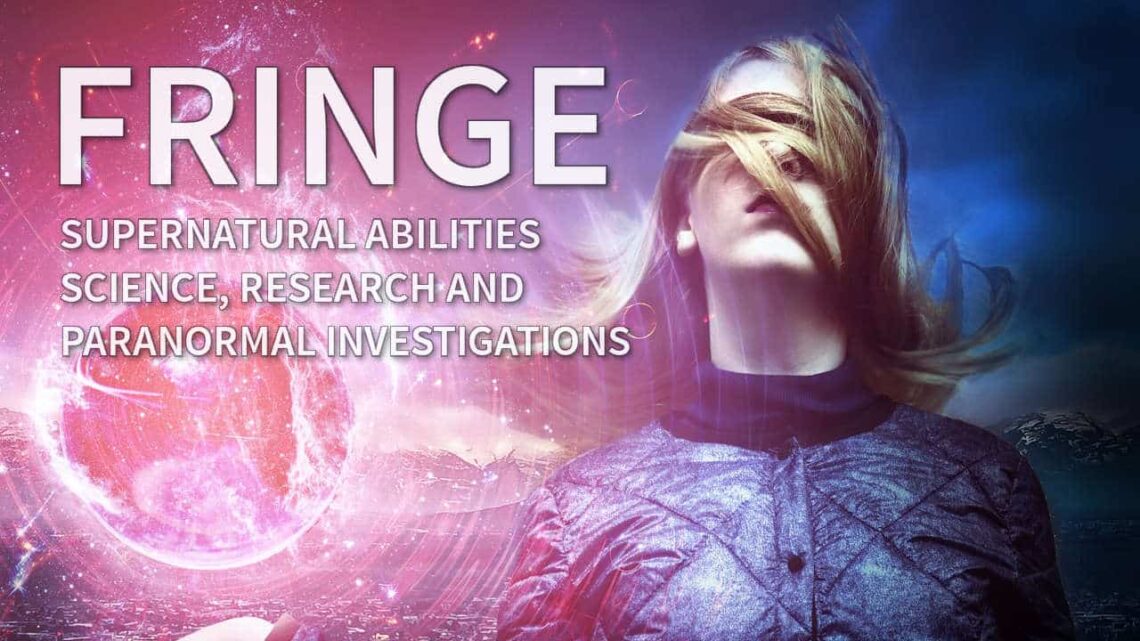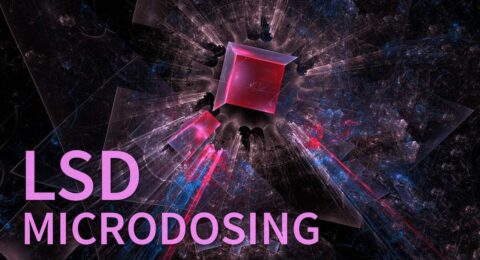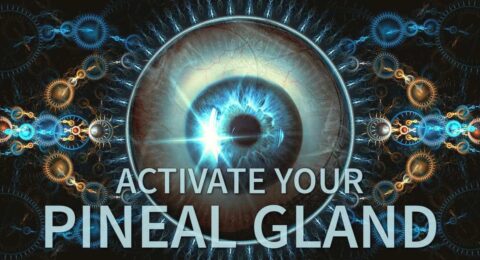
The Big Secret: Dicyanin Dye Makes Ghosts See [Auric Googles]
The dye dicyanin is illegal. This is due to the fact that glasses were once made with it, which allowed to look into the beyond…
As soon as you apply the dye dicyanine between two glasses, the glasses developed in this way develop an incredible property: you can then look into the beyond with these glasses, see the auras of people, recognize ghosts and other beings who are on a higher frequency level than the physical reality represents.
Dicyanin is not a drug, it is a chemical substance that allows you to see into the astral worlds. But it is very difficult to get hold of dicyanine because it has been banned.
Walter John Kilner was born on May 23, 1847, in Bury St. Edmunds in Suffolk, England. Kilner became interested in the human aura, a luminous area that surrounds all living things and is visible to sensitive people. Baron Georg von Reichenbach (1772-1826), a German maker of astronomical instruments, claimed to be able to see auras around the poles of magnets and around human hands. This intrigued Kilner, and in 1908 he began experiments to see if he could make a screen that, when looked through, would make the aura visible to the insensitive eye.
By 1911, he had developed a system that used a dilute solution of a dye called “Dicyanine”, a product of coal tar. Another method he tried initially was to first look at a bright light through a strong alcoholic solution and then look at the subject. However, this proved to be very dangerous and caused damage to the eyes.
Kilner eventually perfected his dicyanine method and produced what became known as the “Kilner Screen”. He published his findings in “The Human Atmosphere” in 1911. In his method, researchers viewed a subject through the screen in daylight, with the dicyanine contained in two hermetically sealed pieces of glass. The subject was a naked person standing in front of a dark background. In this way, three different emanations could be seen. The first was dark and colorless and extended no further than a fraction of an inch beyond the body. The second extended beyond the first about three inches. The last was at least a foot long. Kilner referred to the first aura as the etheric double, the second as the inner aura, and the last as the outer aura. Illness was found to affect the color and size of the aura, with mental deterioration causing a reduction in size and impending death causing the aura to shrink to almost nothing. Kilner’s book was the first to examine the human aura as a scientific fact rather than a questionable psychic phenomenon. Later attempts were made to make a more manageable object out of the screen, something like eyeglasses. These are still called Auric Googles or Auric Glasses today.
Auric Googles – The Auric Glasses
The auric glasses with the dicyanine filter out the white light from the white light spectrum. When Kilner published this ingenious discovery and offered it for sale, the U.S. government immediately intervened and demanded an immediate ban on the use of these glasses and the dye dicyanine. Very few people were able to purchase such glasses at the time before they were then banned.
For the ban, the U.S. government immediately hired an internal chemist to look into all sources of supply that were related to dicyanine. He found out that the company that produced the dye had a special code for its chemists. This code even allowed them to buy LSD, heroin and cocaine as much as they asked for. But the chemists were no longer even authorized to buy dicyanine. Thus, it became clear that dicyanine was classified “more dangerous” than any drug.
George Andrews and Valdamar Valerian
Author and researcher George Andrews, known for his book “Extraterrestrial Friends and Enemies“, quoted a Russian researcher named Valdamar Valerian in his book with the following text:
“A friend of mine and four of his friends were experimenting with crystalline structures a year or two ago, and they found out how to cut them along certain planes so they could actually see the aura or energy field around people. That’s when they discovered that not all people are “people,” or the people they thought they were. It seems that some E.T. humanoids have a dark blue, egg-shaped aura.”
A very interesting observation that Valerian made here, that certain people had no human aura and apparently only disguised themselves as humans. Stupidly, this can be made visible with the aura glasses. It is also interesting to mention here that such knowledge was already intuitively processed in some movies, such as “They Live” or also “Valerian“, a science fiction in which one could perceive an intergalactic market with certain glasses as well as its visitors. It is certainly funny here that the film title “Valerian” is also the last name of the Russian explorer. A conspicuous synchronicity, with which one could consider whether the screenwriter of the film wanted to give a hidden reference. Well, this may be far-fetched, but another clue in the movie “Valerian” were bluish orbs that were highly desirable in it and traded on that market. Oddly enough, dicyanine is also bluish.
A lot of fake glasses on the Internet
Further, detailed descriptions of the human aura can also be described. However, after these glasses were banned, there was a very much slimmed down version of these glasses, which are still available on the Internet today, but have hardly any effect, respectively, one can hardly perceive anything with them, which normally eludes the three-dimensional plane. These fake glasses probably serve more to give the buyer a feeling that he can see auras better with them.
Spectauranine is dicyanine
In the first edition of his book “The Human Atmosphere or Making the Aura Visible with the Aid of Chemical Screens” Walter Kilner wrote:
“A few friends who have made a thorough study of this substance advised us to disclose the true name to the dye we were using. We also wished to do so, but now it is unfortunately too late, because the name “Spectauranine” has been scattered all over the book, and the book is already at the printers. The real name of this dye is dicyanine. The blue dye mentioned in the book is the dicyanine solution. The red dye, on the other hand, contains carmine. These four glasses, two dye stogs per glass, are only necessary, which are necessary for the observation of the aura.”
However, dicyanin was already produced in the previous century by German companies, for example, by the company “Meister Lucius und Brünning“, which also produced dye sensitizers for photographic plates. The editors of the website “The Living Ethics in the World” have searched in the archives of the German libraries, and have found the materials describing production of dicyanine. In this article, the properties and technology of dicyanine production are given, with the hope that people with the spirit of research could be found who could produce the dicyanine jars.
Why is Dicyanine banned?
Dicanyn is not toxic, not a drug or otherwise dangerous, but it is still illegal because it offers the possibility of looking into a world hidden from us, a world that is beyond the physical world of experience. This world is also called beyond or referred to as the 4D plane. This would prove to people that the afterlife and there is a continuation of life after death. Moreover, it seems that with the real auric glasses it is possible to perceive camouflaged people who in reality are not people at all. The proof of an existence of such beings would put mankind in turmoil.
Due to the ban on dicyanine, it has also hardly been reported about and thus has fallen into oblivion.
It is well known that the human eye can perceive only a fraction of the light spectrum. This does not wonder that beyond physical perceptions there could exist other frequencies and other worlds that man simply cannot register because his physical senses are so limited.
An experience report from the Vietnam War
A platoon leader and officer from Vietnam reported that he was asked to use an experimental device for his missions that was constructed much like a night vision device. However, you did not see green through this glass as you would with a conventional night vision device, but it showed a different type of environment when you looked through it. You saw the environment in red, but not the red of an infrared device, but a different kind of color. This showed effects on objects and people, which caused confusion for the officer. A pilot was also using this experimental viewing device and was visibly disoriented. Suddenly, he began to shoot at beings, as one could not see with the naked eye. He was convinced that human-like beings had been there and appeared threatening to him.
In a later interview, the pilot stated that he had also perceived flying demon creatures that were about to attack the helicopter. They are said to have possessed large claws and wings.
Buy aura glasses? Where to buy auric googles?
As mentioned above, there are some suppliers of such glasses, but they are not the original. They are then often called training glasses, so to speak a very light preliminary stage of the original aura glasses. These are sometimes offered in Russia, where you can buy them for about 69 Euros. According to some users of these “training glasses” one can perceive something that reminds of an aura. Invisible entities, the afterlife or astral beings have not yet been perceived with them.
Appendix
From the Imperial Academy of Sciences in Berlin
Further references can be found in the report of the session of the Imperial Academy of Sciences in Vienna:
“The dicyanines are greenish-blue dyes which impart to the bromide silver a sensitivity extending extraordinarily far into the red. The sensitization goes further into the red than with any other sensitizing dye. Therefore, these dyes are indispensable for scientific spectral imaging and for all imaging requiring sensitivity to the least refractive rays of the spectrum. In the case of dicyanine A, the absorption extends somewhat farther into the red than in the case of dicyanine.” (See Eder’s Yearbook 19, p. 189; also J. M. Eder: On Color-Sensitive Plates for Spectrum Photography in the Infrared, Red Yellow and Green.)
“The sensitivity of the gelatin dry plates prepared with dicyanine, however, is not very great, so that for the general purposes of three-color photography pinachrome or pinacyanol are preferable. For green, the dicyanine does not sensitize; the plates can therefore be processed without danger in dark green light of the shade of the F line.”
Directions for use of dicyanine
“For use, dissolve 0.1 g of dicyanine or dicyanine A in 100 cc of alcohol and keep this solution (l :1000), which can be kept for only a few weeks, in the dark. If possible, it is advisable to use a freshly prepared solution. If one wants to sensitize dry plates, one bathes about 3 minutes in 200 ccm water 4 ccm dicyanine solution (l : 1000) washes 2-3 minutes in water and dries. It is possible to avoid washing the plates and at the same time obtain faster drying by sensitizing the plates in an alcohol-containing bath. The relevant prescription is: 500 ccm dist. Water, 250 ccm alcohol (one can also use denatured alcohol), 12 ccm dicyanine solution 1:1000, bath for 3-4 minutes, do not wash. The bath will keep for some time in the dark; about 3 dozen 9×12 plates can be bathed in the given quantum; after that it should be strengthened with some dicyanine solution.
From the proceedings of the Academy of Sciences in Vienna. Mathem. natural science class; Division IIa, vol. 124; 3rd and 4th issues. With permission of the author. J. M. Eder:
“For separation, the finely pulverized crystals are first boiled three to four times with 300 cc of water each. A deep violet broth is obtained, from which pseudodicyanine and very little dicyanine precipitate on cooling. The two dyes, which are almost insoluble in cold water, adsorb each other very strongly despite their different solubilities, so that their separation in the form of the iodides is very laborious. The dye mixture is recooked twice with larger amounts of 90-proof alcohol. In this process, most of the pseudodizyauine iodide goes into solution along with a little dicyanine iodide, which usually separates again when the alcohol cools. By evaporating the mother liquor, the pseudodicyanine iodide is obtained, which becomes pure by recrystallizing several times from spirit. However, the dicyanine iodide remaining after boiling with alcohol, combined with that separated from the gasoline solution on cooling, is not yet free from pseudodicyanine. It is recrystallized several times from hot pyridine, in which it is also much more sparingly soluble than the pseudoproduct, and so is finally obtained nearly spectrally pure in beautiful green needles washed with alcohol. The two dyes are more easily separated as bromides, which are obtained from the suspension of crude iodide in 50 perc. alcohol by boiling with bromide silver. The iodine silver remaining is boiled out several more times with alcohol. When the alcohol is concentrated, the dicyanine bromide precipitates first and then the pseudodicyanine bromide. The dicyanine bromide is recrystallized repeatedly from alcohol.
For the preparation of the lower carbon dicyanine from 2,4-dimethylquinoline, there is a recent prescription by Mills and Odams [25]: a solution of 2,4-dimethylquinoline ethyl iodide (9.39 g) in 10 cc of methyl alcohol is allowed to cool until the salt begins to precipitate. A solution of sodium methylate prepared from 0.345 g sodium and 30 cc methyl alcohol is gradually added and the mixture exposed to air. It turns deep blue, and the dicyanine crystallizes out. It is filtered off after 36 hours and recrystallized three times from methyl alcohol.
Properties: The dicyanine iodide of 2,4-dimethyl-quinoline [25] forms crystals which, when viewed in large quantity, are olive green and show a golden tinge. They lose their crystal methyl alcohol content at 110° and 15 mm pressure and melt at 244-252°. The spectrum shows a primary absorption maximum at 655.5 microns and a secondary at 603.5 microns. It agrees well with the spectrum of the simpler homologue, the dye of lepidine iodoethylate and chinaldine iodoethylate:
The spectrum of this dye has the primary maximum at 675 micrometers, the secondary at 606.5 micrometers, and a weak tertiary at 562.4 micrometers. It differs from that of isomeric pinazyanol by greater intensity and smaller width of the primary maximum, lower intensity of the secondary maximum, and a tertiary maximum that is only hinted at.
The bromide [7] of the dye from 2,4-dimethylquinoline crystallizes from alcohol in brass-yellow, lustrous leaflets that absorb strongly at 656 micrometers and weakly at 606 micrometers. The corresponding pseudodicyanine iodide [7] is obtained from alcohol in greenish-bronze leaflets and shows as a picrate the strong absorption stripe at 666 micrometers, the weak one at 559 micrometers. The 2,4,6-trimethylquinoline forms a dicyanine [7], the iodide of which is described as beautiful green needles (from pyridine), the bromide of which is described as beautiful light green needles (from alcohol). The corresponding pseudodicyanine iodide [7] is obtained from alcohol in beautiful dull green prisms soluble in methyl alcohol, ethyl alcohol and acetone with pure blue color. The absorption fringes of picrate are 611 and 565 microns.
The dicyanine has been discovered by E. König and Philips [19]. It yields a dirty blue solution with alcohol and a dirty red solution with water [5]. The difference in color, as with pinazyanol, is explained by a different degree of prominence of the two absorption bands. The dicyanines (dicyanine and dicyanine A, to be discussed shortly) are greenish-blue dyes that give bromide silver a sensitivity that extends extraordinarily far into the red. The sensitization goes further into the red than with the sensitizing dyes known until their discovery [19, 28]. Therefore, these dyes are indispensable for scientific spectral imaging and for all imaging requiring sensitivity to the least refractive rays of the spectrum. However, the sensitivity of the gelatin dry plates prepared with dicyanine is not very great [48], so that for the general purposes of three-color photography the pinachrome or pinazyanol are to be deducted. In green, the dicyanine does not sensitize; therefore, the plates can be processed without danger in dark green light from the shade of the F line.
Such a copy of an Aura Google you can order HERE!
Sources:
Scarenormal Blog
Lebendige Ethik
Brighteon
BitChute
YouTube
Youtube – Bericht des Piloten
GAB
Parler
Aurabrille aus Russland
Aurabrille aus Russland Vintage
Books:
C. Beyer, J. pr. 33, 406 (1886).
A. v. Hübl, Eders Jb. 19, 183 (1905).
O. Fischer, J. pr. 98, 204 (1918).
L. A. Mikeska, H. L. Haller und E. Q. Adams, Am. Soc. 42, 2392 (1920).
F. M. Walters und R. Davis, J. Frankl. Inst. 193, 103; C. 1922, II, 1007.
S. Palkin, J. ind. Eng. Chem. 15, 379; C. 1923, III, 853.
W. H. Mills und R. C. Odams, Soc. 125, 1913 (1924).
V. P. Lubovich und E. M. Pearon, Proc. Trans. 16, III, 195; C. 1924, I, 1744.
M. L. Dundon, Brit. J. Phot. 73, 748 (1926).
O. Block und Fr. Hamer, Phot. J. 68, 21 (1928). Patente.
U. S. A. P. l 437 674 v. 1922, S. Palkin.
E. König, Das Arbeiten mit farbenempfindlichen Platten, II. Aufl., Halle 1921.







One Comment
Joshua-Lee
Hey brother…
Do you have any ideas on possibilities of acquiring dicyanin locally or abroad? Thanks mate!